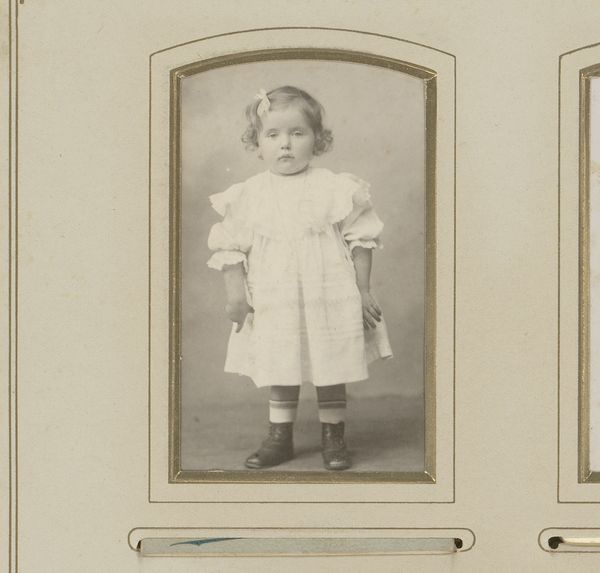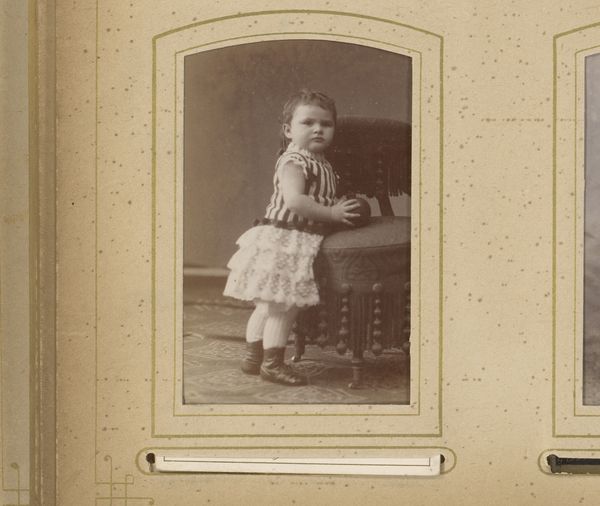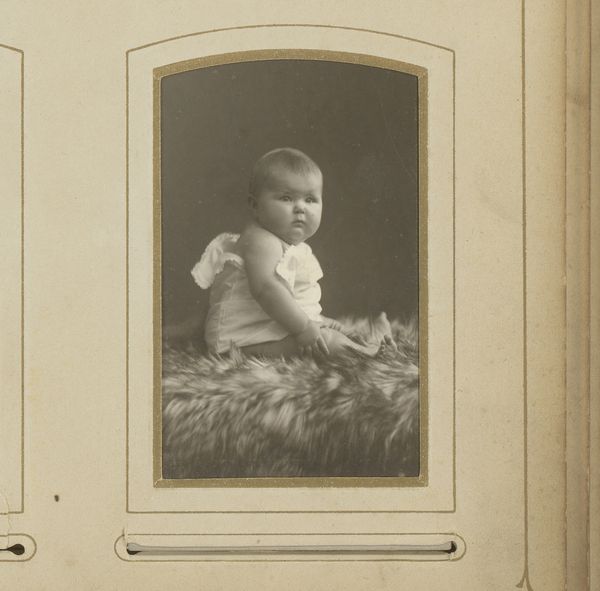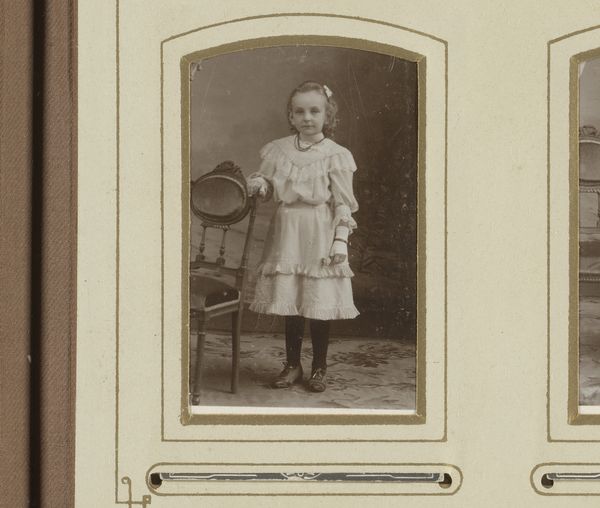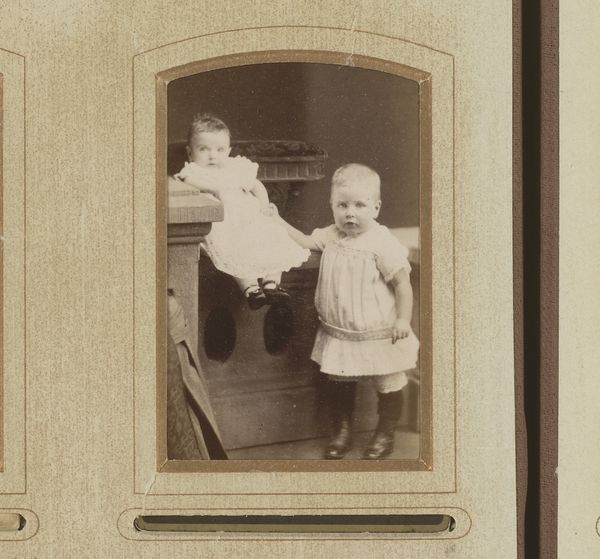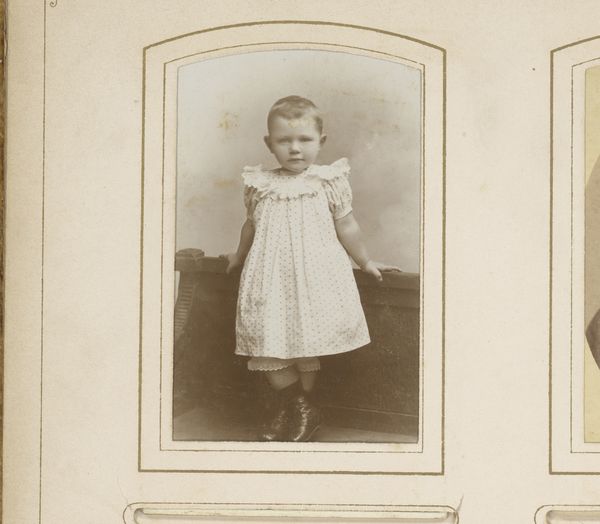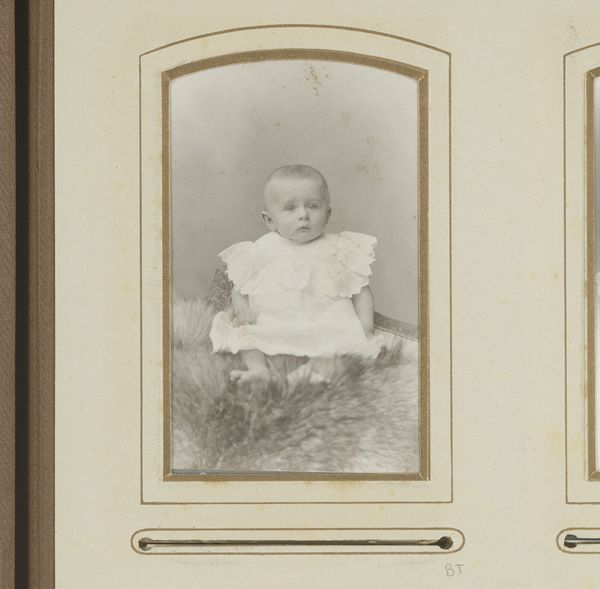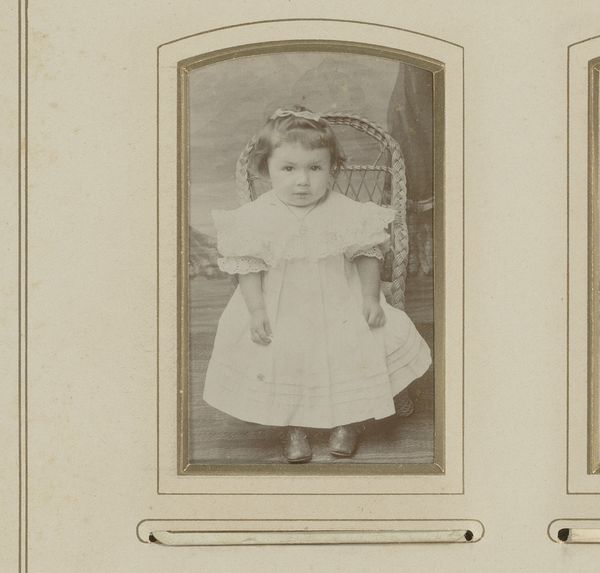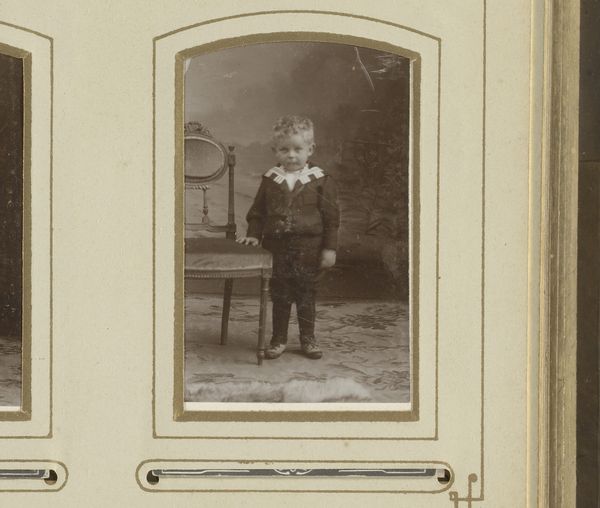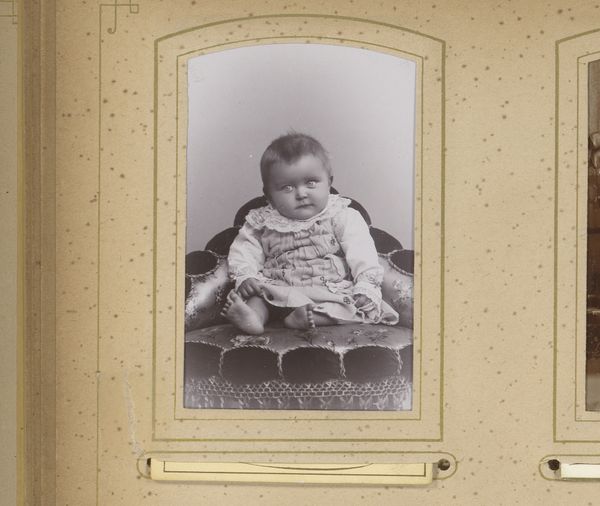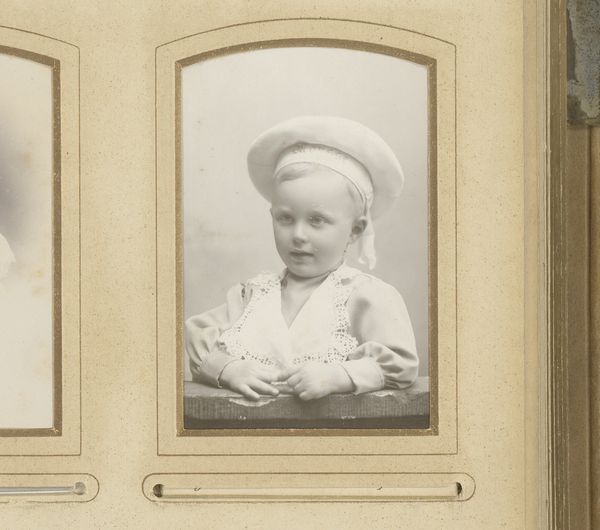
photography, gelatin-silver-print
#
portrait
#
photorealism
#
photography
#
historical photography
#
child
#
gelatin-silver-print
#
genre-painting
Dimensions: height 83 mm, width 53 mm
Copyright: Rijks Museum: Open Domain
Art Historian: This is "Portret van een kind, staand bij een stoel," taken sometime between 1900 and 1910 by Johannes Vlaanderen. It’s a gelatin-silver print. What are your initial thoughts? Editor: It’s quite charming, actually. There's something very formal about the child's pose and clothing, but their expression feels so innocent and a bit melancholic. How do you interpret the seriousness of the portrait in relation to its historical context? Art Historian: Well, portraiture of children around the turn of the century carries significant weight. These images often served as status symbols for the emerging middle class. Consider the child's attire, the studio backdrop – all carefully constructed. Why do you think they put the child next to that particular chair? Editor: To look grown-up perhaps? I see it might show the family’s refinement through the trappings of luxury. How might social class influence this era’s aesthetic preferences? Art Historian: It absolutely did. The growing middle class emulated aristocratic tastes, particularly through visual representation like this. The rise of photography made this accessible to families that previously couldn't afford painted portraits. The photographic medium played a huge role in defining that era's perceptions. How might displaying this photography at an exhibition recontextualize this photography today? Editor: Putting this on display shifts its purpose entirely, I hadn’t thought about that before. Art Historian: Exactly! It changes from a personal memento into an artifact subjected to public scrutiny. Thinking about who gets to decide which images become part of the historical record is something important here. What are you taking away from our discussion today? Editor: This makes me more sensitive to thinking about class and status through the display of historical artworks like this. I now see how photographic history has helped me consider art's deeper layers. Art Historian: It also encourages reflection on representation and the construction of historical narratives that these portraits reflect.
Comments
No comments
Be the first to comment and join the conversation on the ultimate creative platform.

